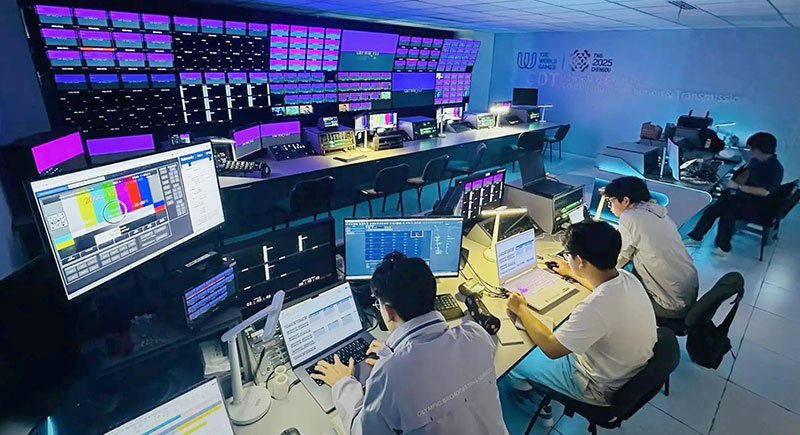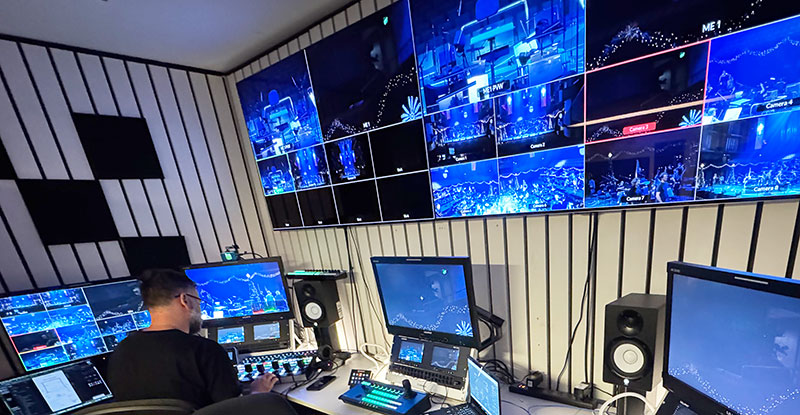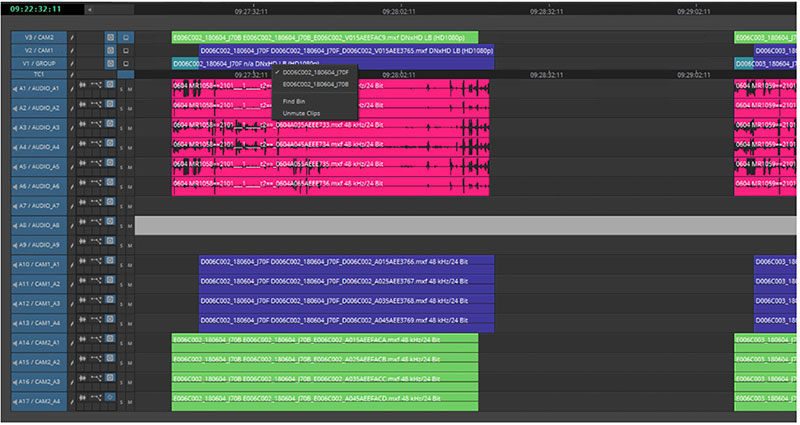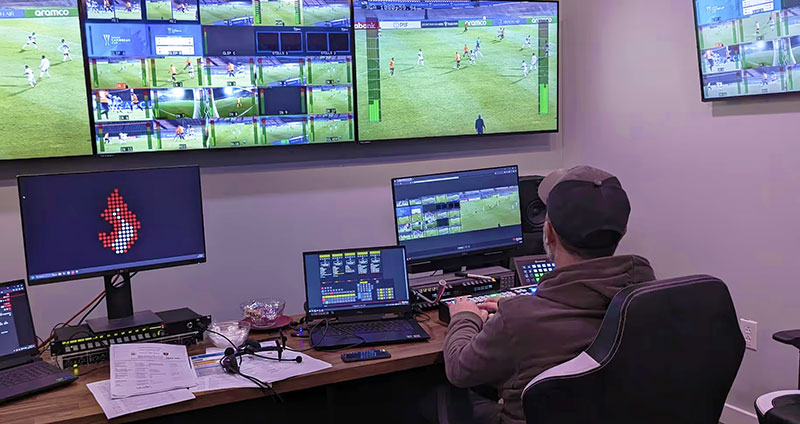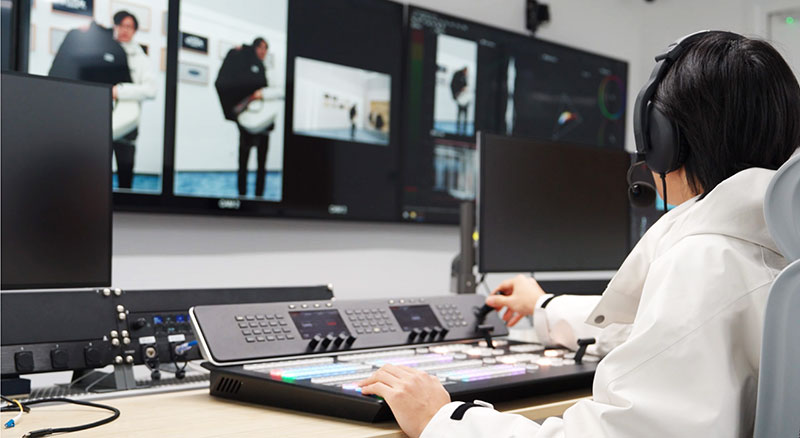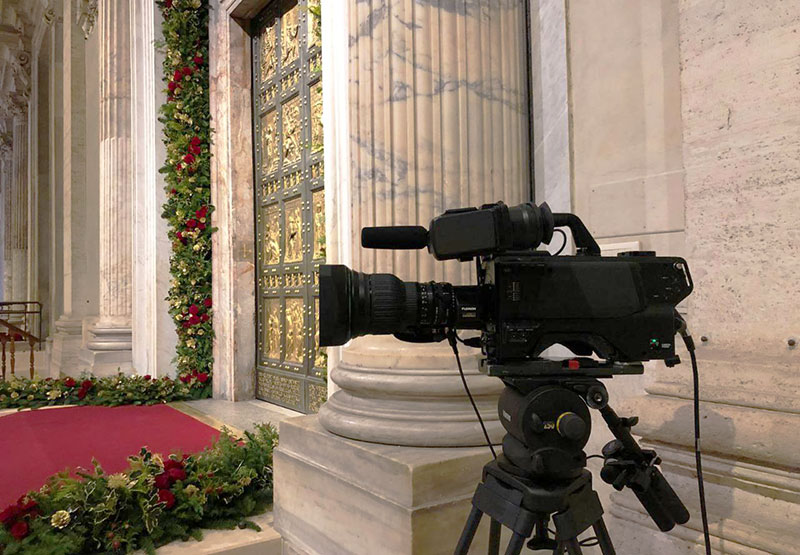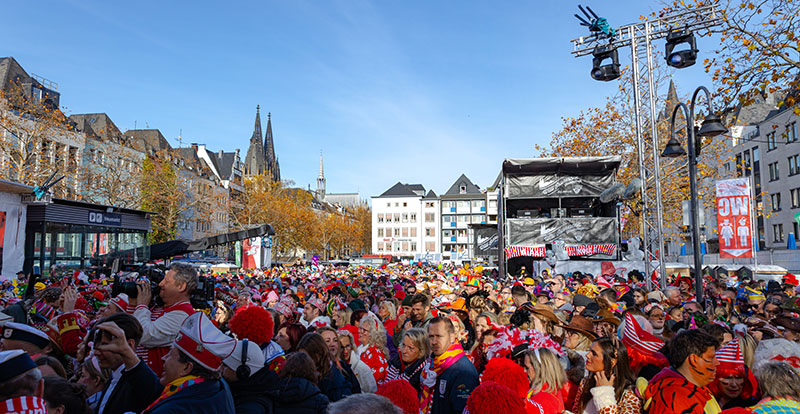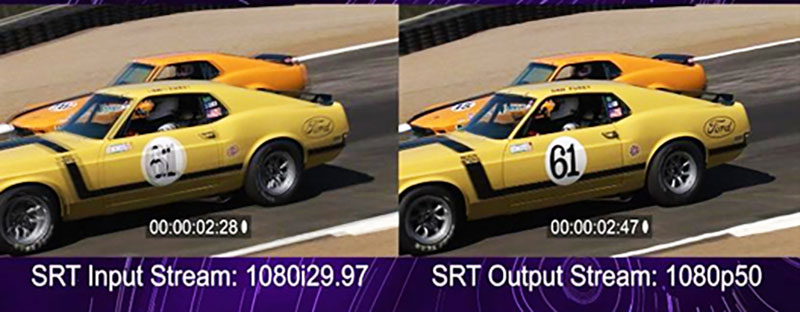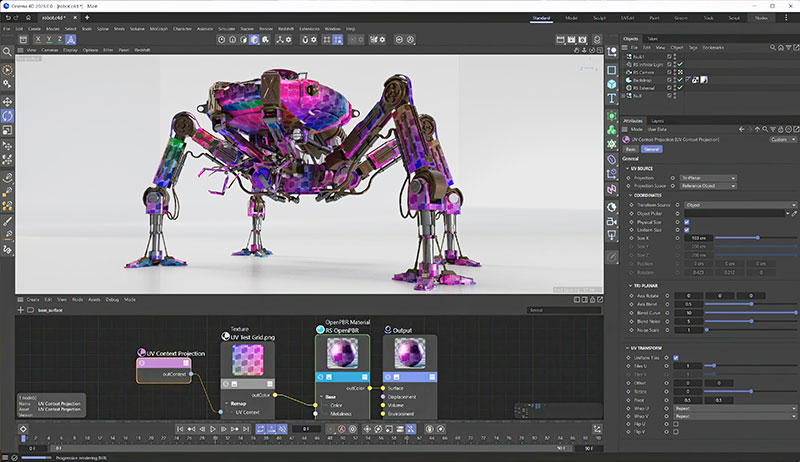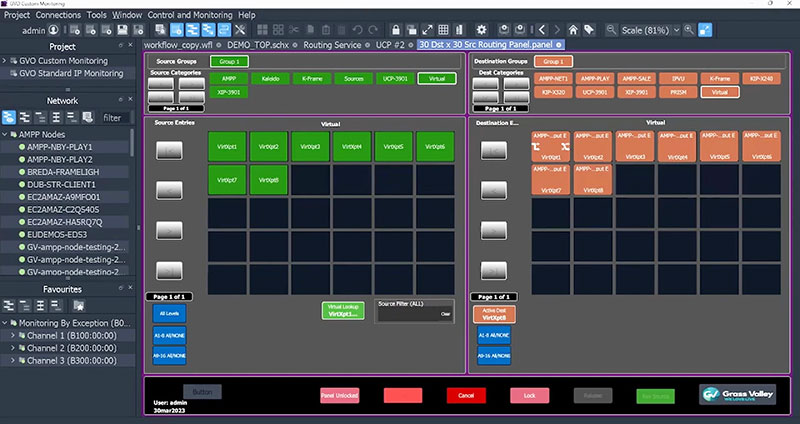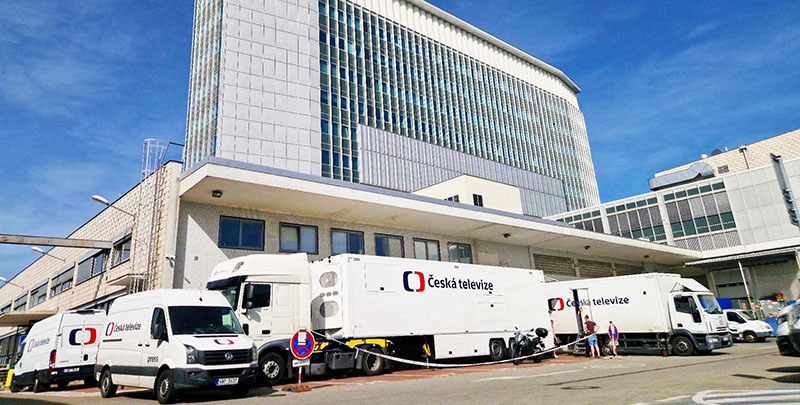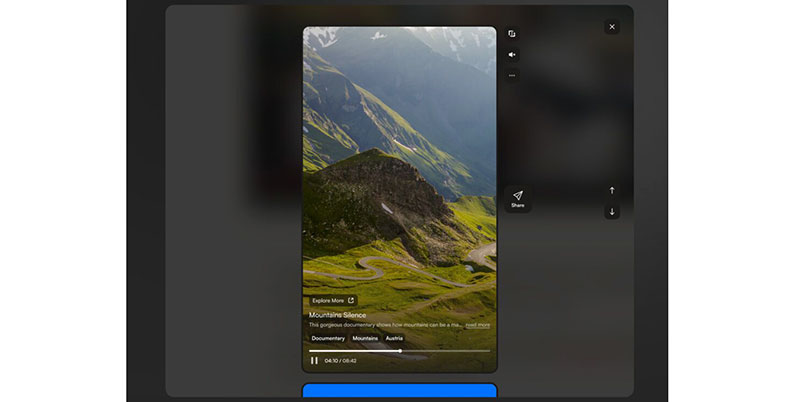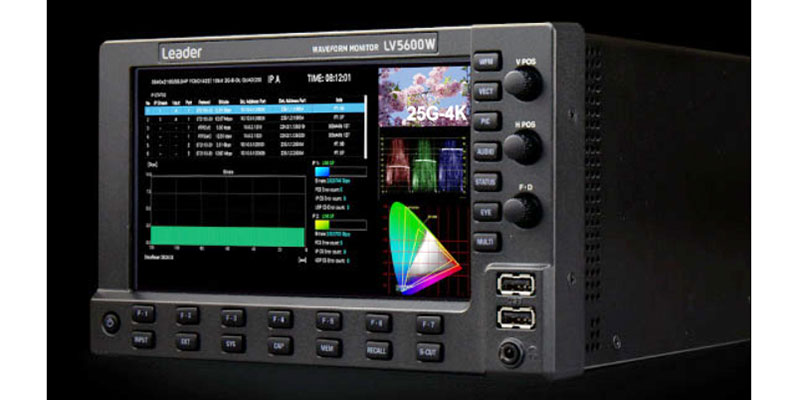Cinegy released a new version of its Cinecoder video codec SDK, solving a fundamental problem for TV and broadcast regarding H.264 interlace encoding support on NVIDIA GPUs.
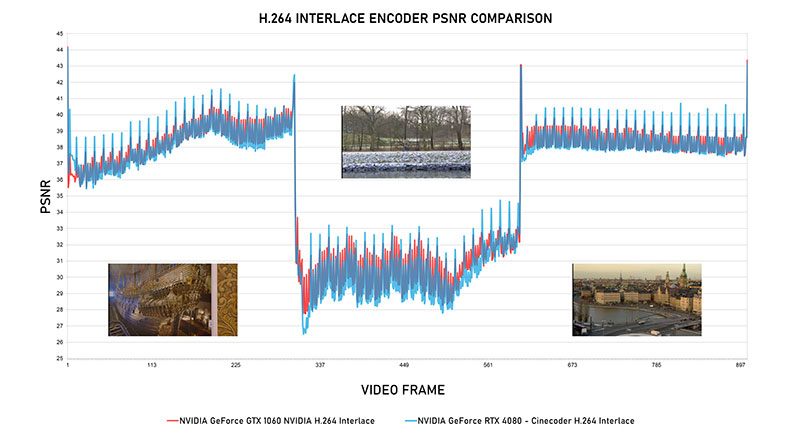
This chart shows a standard PSNR test performed with the same test clips encoded into a H.264 1080i stream at 12 Mbps with a 12:3 GOP structure. The red graph representing a Pascal series hardware encoder and the blue graph shows the Cinecoder using an Ada Lovelace GPU. Three test clips were used, which is visible looking at the graphs displaying notably different PSNR levels, a direct result of the varying complexity of the source video material.
The H.264 interlace video format is used widely for 1080i HDTV transmission via over-the-air, satellite, cable or streaming service providers. The majority of HD broadcasts still use this format even if the adoption of newer codecs and progressive formats is increasing. For years, software developers and solutions vendors have been using NVIDIA GPUs for H.264 encoding capabilities, which became the basis of many processes in the media industry.
With the introduction of the Turing series of GPUs, NVIDIA ended H.264 interlace support. While this initially caused issues, the availability of the previous Pascal generation of NVIDIA cards made it manageable. However, Pascal-based hardware availability has now ended, and these cards no longer receive NVIDIA driver updates, significantly impacting many broadcast workflows.
Cinecoder SDK version 4.22
Cinegy's latest Cinecoder SDK version 4.22 addresses this challenge by encoding interlaced H.264 on Turing, Ampere and the current Ada Lovelace generation NVIDIA GPU cards. This development is an advantage particularly for the broadcast and media & entertainment industries. Not only is most of their content still delivered in this format, but the current generation NVIDIA cards can now reach higher performance, increase encoding throughput and improve energy efficiency. Newer cloud instances also achieve better value for money with up-to-date NVIDIA drivers.
"This is a great achievement and at the same time a huge relief to all of us," said Jan Weigner, CTO of Cinegy. "Our customers were really struggling to find an answer, especially after the driver support for the Pascal-based cards ended. Now new NVIDIA cards can be used for H.264 interlace encoding, achieving much better performance. Also, when looking at cloud deployments, we do not have to limit ourselves to using AWS G3 instances, which were the AWS instances with Pascal series GPUs.”
Benchmarks using standard test clips show that the Cinecoder interlace H.264 encoder for NVIDIA GPUs creates the same or better-quality output than the original NVIDIA Pascal series hardware encoder. [See the image above.]
Stream Restrictions
The encode performance on Ada Lovelace based NVIDIA GPUs, the current NVIDIA generation, is around 500 fps for H.264 1080i per NVENC (NVIDIA Encoder) unit, which means that cards with two NVENC units, such as the RTX 4070 Ti, RTX 4070 Ti Super, RTX 4080 and RTX 4090 (or their professional counterparts like the RTX 4000 ADA and up) can encode around 1,000 fps. NVENC is the NVIDIA graphics card feature that performs video encoding, offloading this task from the CPU to a dedicated part of the GPU.
Translating 1,000 fps into 1080i50 or 1080i59.94 stream numbers would theoretically result in 20 respectively 16 streams for a single NVENC or 40 respectively 32 streams when using a GPU with two NVENCs. Theoretically thinking is necessary because the other typical system overheads tend to reduce the number and also NVIDIA consumer cards have a hard limit on numbers of enabled output streams, making a second NVENC unit irrelevant when encoding only HD streams.
Freedom of Choice
“This is why the professional NVIDIA cards like the RTX 2000 Ada or higher are important, as they have no stream output number restrictions,” Jan said. “They also come in more suitable form factors for use in servers, like the RTX 2000E Ada, which is single slot, half-length and half-height. That fits into anything. Or, the RTX 4000 Ada is also single slot, but full size.”
Now broadcasters and media professionals have regained a freedom of choice between any of the current or recent NVIDIA GPUs to use in their broadcast encoding workflows.
Cinegy's Cinecoder SDK can be licensed specifically for enabling NVIDIA GPU H.264 interlace encoding, or for any additional encoding, decoding and media handling features. It is also the source of Cinegy's proprietary Daniel2 codec, a super fast video codec designed to run natively on GPUs – with over 10,000 fps 4K encode and 30,000 fps 4K decode capabilities. https://www.cinegy.com/




